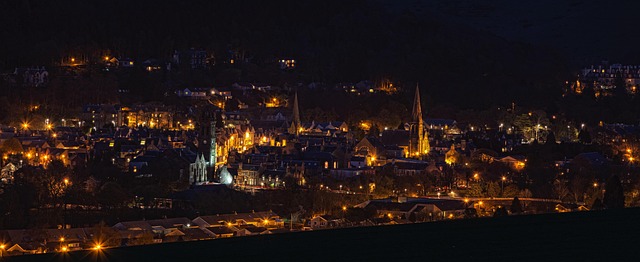If you’re a photography enthusiast or a lens lover, you’ve probably come across the term dynamic range. But what exactly does it mean, and why is it so crucial when it comes to capturing compelling images? Let’s unlock the power of dynamic range together and explore its significance in the world of photography.
Dynamic range refers to the difference between the darkest and lightest parts of your image, allowing your camera to capture a broader spectrum of light and detail. In essence, it’s the spectrum of tones that a lens and camera combination can record. A high dynamic range in a photograph means there’s a wide range of values from shadows to highlights, giving depth and texture that truly brings the subject to life.
The Role of Optics in Dynamic Range
The quality of your camera’s optics plays a pivotal role in achieving superior dynamic range. Lenses with exceptional coatings and high-quality glass can minimize lens flare and maintain contrast, allowing more light to enter while retaining clarity. Whether you’re experimenting with prime or zoom lenses, understanding the optics at play can elevate your photography to new heights.
Capturing Stunning Photos
When you’re out shooting, the way light interacts with your environment can dramatically affect the dynamic range of your images. For instance, the golden hour—the time shortly after sunrise or before sunset—can enrich your photos with a warm glow while creating a dramatic contrast between the highlights and shadows. By utilizing this natural light, you can pull off breathtaking shots that showcase the full spectrum of colors and details.
Camera Settings that Enhance Dynamic Range
Your camera’s settings also play a crucial role in harnessing dynamic range. Shoot in RAW format instead of JPEG; RAW files capture more information and provide greater flexibility during post-processing. Lowering your ISO setting can minimize noise and enhance the overall quality of your images, expanding your dynamic range further. Manipulating exposure settings—such as experimenting with bracketing—can also help you capture a scene more faithfully, giving you that stunning photo you strive for.
Post-Processing: Enhancing the Scene
Editing software like Adobe Lightroom or Photoshop allows you to refine your photos and bring out the full potential of their dynamic range. Adjusting shadows, highlights, and contrast can unleash hidden details in both bright and dark areas, ensuring that every aspect of your shot is vividly represented. Just remember, a delicate touch is key; you want to enhance, not overwhelm.
Embracing the concept of dynamic range will transform the way you approach your photography. It’s about seeing the world through a lens that captures not just the image, but the emotion, the light, and the vibrancy of life itself. Understanding how to optimize dynamic range can help you create images that resonate on a deeper level, allowing your audience to experience the moment as you did.
So gear up, and let the exploration of dynamic range inspire your next photo adventure. With the right lens and techniques, there are no limits to the artistic possibilities waiting for you!




